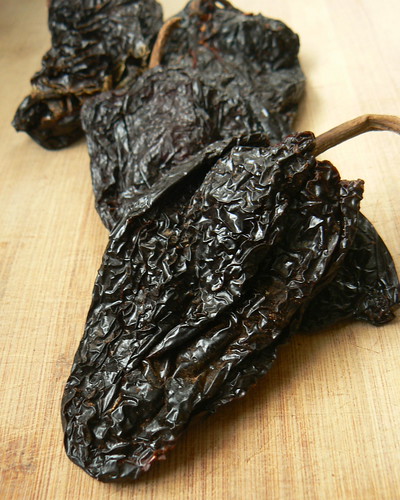
Recipe for Chorizo.
What better way to learn about culture and food than by eating sausage. In today's episode, we take a little trip South of the border as I try to understand how two cultures came together to make this magical mixture, chorizo. Olé!
Chorizo is Spanish for sausage, and there are many kinds of chorizo ranging what we know as fresh chorizo, to Chorizo Verde, to a dry cured Spanish chorizo. In America we are most familiar with the fresh Mexican rojo (red) chorizo, a salty spicy sausage that comes in long pakages. My favorite way to eat it is for breakfast fried up in a hash with peppers and potatoes. But the store packaged stuff is nasty, I want a recipe that uses few ingredients and tastes like chorizo.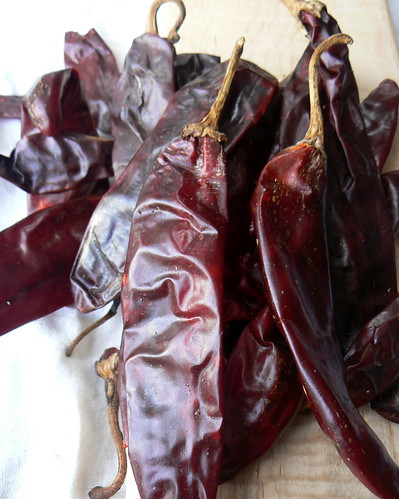
Chile Paste and the Aztec Blender.
The primary flavor for the chorizo is the chile (or chilli, or chili, or pepper). While I have made sausage in the past by just using powdered peppers, I believe you get a better flavor by preparing a chile paste from dried peppers. Here's how I learned to do it in school: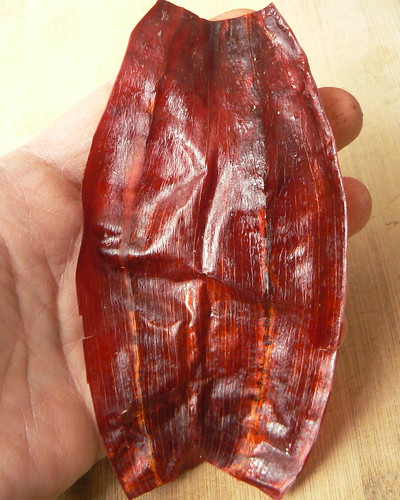
Remove the stems and seeds from the chiles.
Blanch them in oil. No more than five seconds (really three), or they will they will burn, you'll get the hang of it. Make sure the oil is no more than 350F. Strain and save the chile oil.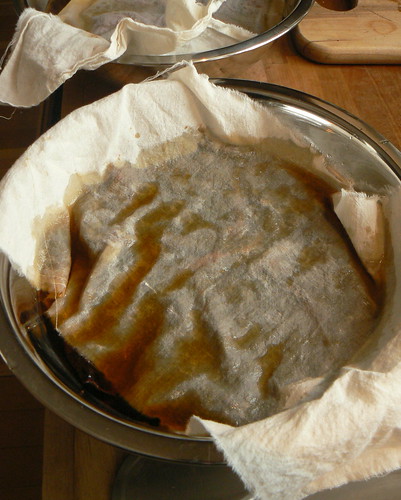
put the blanched chiles in hot tap water, cover with a paper towel and let them hydrate for ten minutes.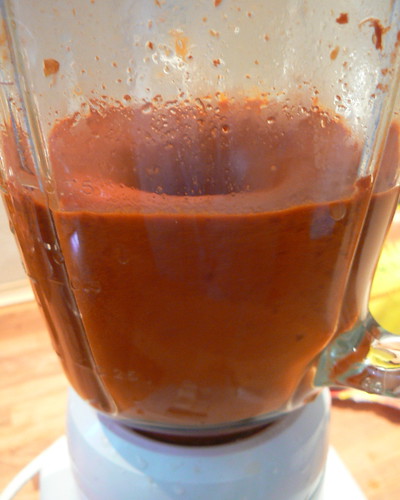
Discard the hydrating water, put the chiles in a blender, add about a cup of water (I started with 3oz (90g) of chiles) and puré. Strain the mixutre.
If you watch a lot of Rick Bayless, you might have noticed that the blender gets used a lot in the Cocina Mexicano.I have often wondered how did this stuff get made before the modern miracle of the West Bend. The Matate made it all possible. It's the three legged grinding stone that for centuries has been in the center of the Mexican kitchen. Up until the turn of the twentieth century a woman in the campesino would spend a third of her life grinding food (corn mostly) on the Matate, "The bitter black stone." Check out ¡Que vivan los tamales!: Food and the Making of Mexican Identity, by Jeffrey Pilcher for a history of the Mexican kitchen.
The meat of the matter.
So you've got your flavorful chile paste what about the meat? Before the Spanish showed up, there wasn't much meat in the Mexican diet, just turkey, iguana, insects and of course fish. With the conquistadors came Mestizo cuisine, a mixture of the two cultures, the Spanish introduced pork, beef and chicken along with rice, garlic and onion. The Spanish also introduced the art of making sausage. I read in Diana Kennedy's book, My Mexico: A Culinary Odyssey with More Than 300 Recipes, "Cortes introduced cattle and pork into the valley (Toluca, famous for sausage...(and) Spanish techniques for sausage making and pork curing naturally followed."
Okay so we have the Mexican Spanish food connection. Let's illustrate it in sausage.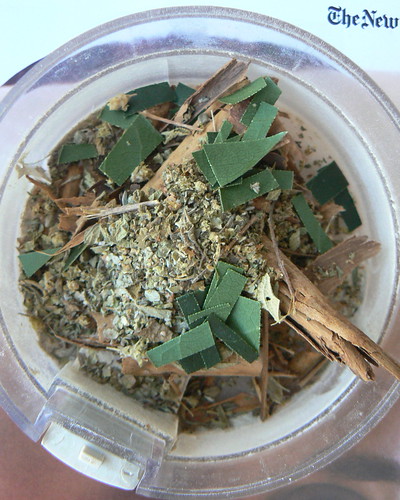
Herbas de olor.
Like the bouquet garni of French cooking, Mexican cuisine has amomatic herbs that serves as a seasoning base: Bay, thyme and marjoram make up the herbas de olor. In some Mexican groceries you can find these three fresh bunched together. I found these herbs in several Chorizo recipes so we will use a little bit. I would recommend trying to find fresh bunches, but in my final recipe I ended up using some dried. I also used some Mexican oregano (because I had some), if you don't have it I wouldn't worry about it too much. Mexican Oregano is not a part of the oregano/marjoram family it's actually related to Lemon Verbena.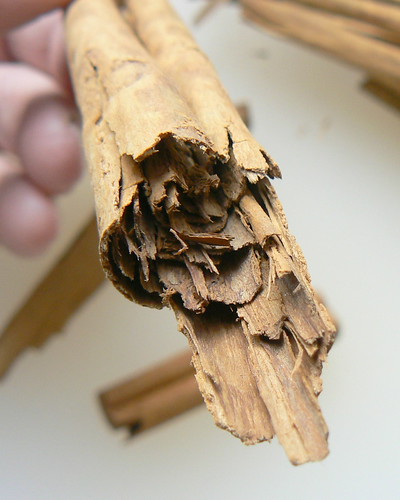
Canela - Cinnamon.
I have known for some time that what we typically call cinnamon is actually cassia, but I hadn't known the difference. In addition when I read recipes calling for "Cinnamon, preferably Mexican" I figured there's a third version from South of the border. Mexican cinnamon is actually true cinnamon and it's imported from Asia. The difference between cinnamon and cassia is dramatic: Cassia is blunt, cinnamon is light and sophisticated. Don't get me wrong, I wont be giving up my cassia for my cinnamon buns, but using Canela, true cinnamon, in moles or chorizo makes a world of difference.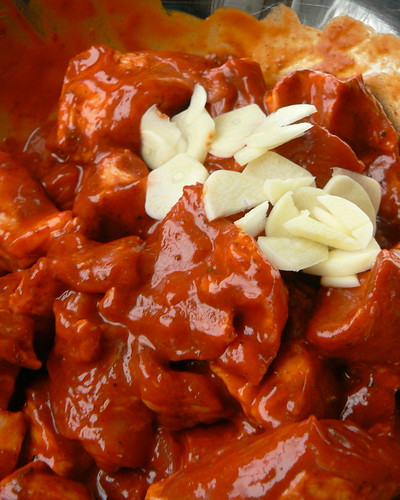
I made up two chiles pastes: guajillo and ancho. Bayless calls the guajillo the "workhorse" of Mexican cuisine, but I would guess the ancho is the most widely used. The guajillo gives beautful color, the ancho provides rich undertones, along with the spices and some garlic, I marinate the pork for an hour.
I made several batches using various combinations of ingredients, I even did a batch with added fat,but I wanted to keep things as simple as possible so I left out the added fat. In all I made about ten pounds of sausage over the past four days.


Here's the recipe:
450 g (1 lb) pork shoulder cubed
60g (2oz) Chile paste (I used 50/50 guajillo/ancho, see above for paste instructions)
2 cloves (10 g) of garlic minced.
8 g (1 teaspoon) Salt
4 g cinnamon (for cassia use less, see above)
2 fresh bay leaves minced
1 g dried thyme
1 g dried marjoram
1 g dried Mexican oregano
15 ml (1 Tablespoon) Cider vinegar
Combine cubed pork, chile paste, and garlic. Process salt, herbs and spices in a spice mill and add to mixture. After a rest, run the mass through a grinder. Kneed it adding the vinegar until it starts to come together, about one minute. Stuff into hog casings for that loganzia look.
Chorizo is cooked without a casing, use it for breakfast or for stuffing peppers or for whatever. Enjoy. I gotta get to class.
Cheers.
25 February, 2009
Chorizo
Subscribe to:
Post Comments (Atom)


3 comments:
how can you write about chorizo without posting the novak video?
Yum. Thanks for the informative recipe. I did not know about the cassia/cinnamon craziness.
And, yeah, shouldn't you have at least mentioned the novak video?
Nice, I like the chili paste overview. I just loaded up on dried chilis from Penzies.
Post a Comment